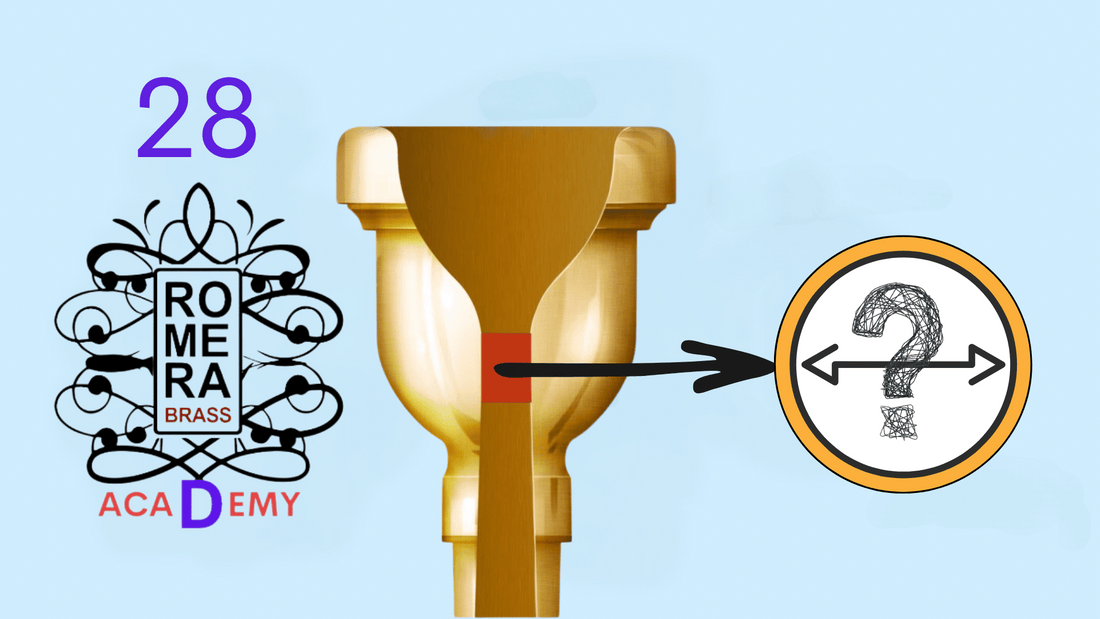
28. The basic function of the throat
Share
Greetings Metalheads
This is a post with no video, so you'll have to read🫣
It is an extension of Nº29 where we talk about the two dimensions that the throat has and in this post Nº28 we talk about the main function of the throat.
Note: the throat has an influence on all parts of the mouthpiece, from the depth and shape of the cup, backbore,etc... it can also condition your way of playing, we will see it in other chapters, but in this post we focus in the basic function of the throat.
The function of the throat is basically to retain and regulate the passage of air to the instrument.
Before starting I want to make it clear that there are NO large or small throat, each musician would simply have to adapt it to the amount and pressure of the air you throw.
Let's start!!!!!!!!!
The retention that the throat creates is associated with the most important acoustic phenomenon of a mouthpiece, which is the sound reflection.
I already made a video about sound reflection in chapter No. 19, don't miss it if you haven't seen it yet.
I remind you the basic function of the throat.
Retain and regulate the air flow to the instrument.
It seems simple, but it is very, very important if you want to find your best mouthpiece.
I give you two examples so that you better understand the importance of the retention and regulation that the throat provides us, always in relation to the air you throw.
First case
Imagine that you blow little air and the throat of your mouthpiece is too open…..
(It is understood as too open, in relation to the little air you throw....
If the throat is too big and does not hold you back, all the air you throw goes directly to the instrument, you may think that this is good, but this is not the reality.
The air does not encounter resistance and a certain pressure is not created inside the mouthpiece,
Normally the result we hear are:
Difficulty in focusing the first attack, when you play fast dives it seems like the sound of a duck, tua tua, tua..., the air you throw is not all transformed into sound and the sound is poor, with little projection, everything remains more or less but not centered, this symptom can be caused by having the grain too large, always and I repeat regarding the air you draw.
In this example it is a musician who blows little air and the throat of the mouthpiece is very large (in relation to the air he blows).
Second case:
Contrary to the first case: A musician who blows a lot of air and the mouthpiece has a closed throat, with a very small diameter.
The throat will retain the air you throw, the cup will fill with air, creating a lot of pressure inside.
Result, normally the same pressure created inside the cup stops the vibration of the lip, this is noticeable in the first bite you make, first a little air comes out and then the sound somehow, first the pressure escapes. It has been created inside the cup in the form of air and when there is no longer so much pressure, the lip begins to vibrate more freely and the sound comes out.
It can be difficult for you to chop quickly, too much pressure is created and the same pressure stops the vibration.
In reality, it makes it difficult for you to do everything you can touch, due to excess pressure that stops the vibration of your lip.
As you can see, the throat must always be compensated for the air you throw.
Another concept that I want to leave in this post is that,
There are NO large or small throat, you simply have to adapt it to the amount and pressure of the air you throw.
You see, grain is much more than a number in a catalog.
I'm Toni Romera
I look forward to your questions and comments
Greetings and lots of music
